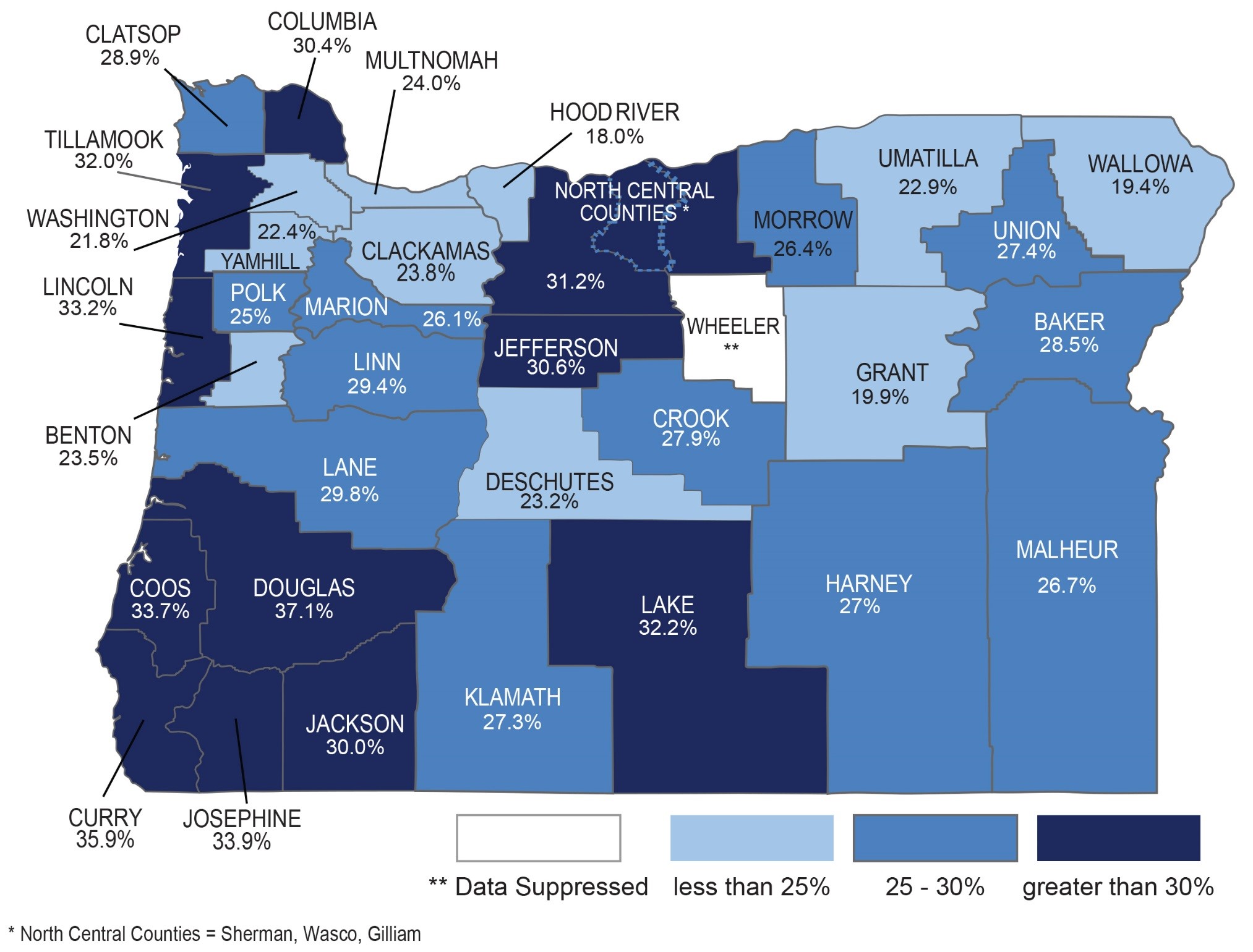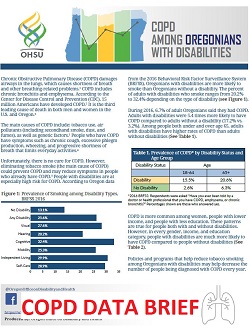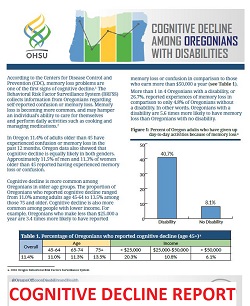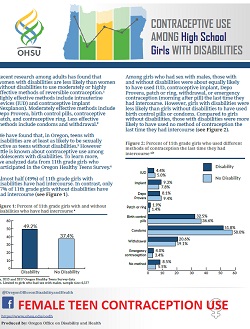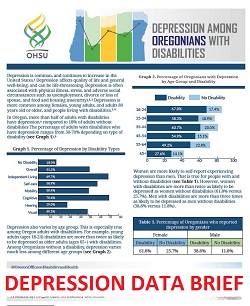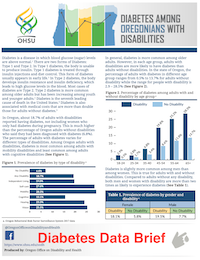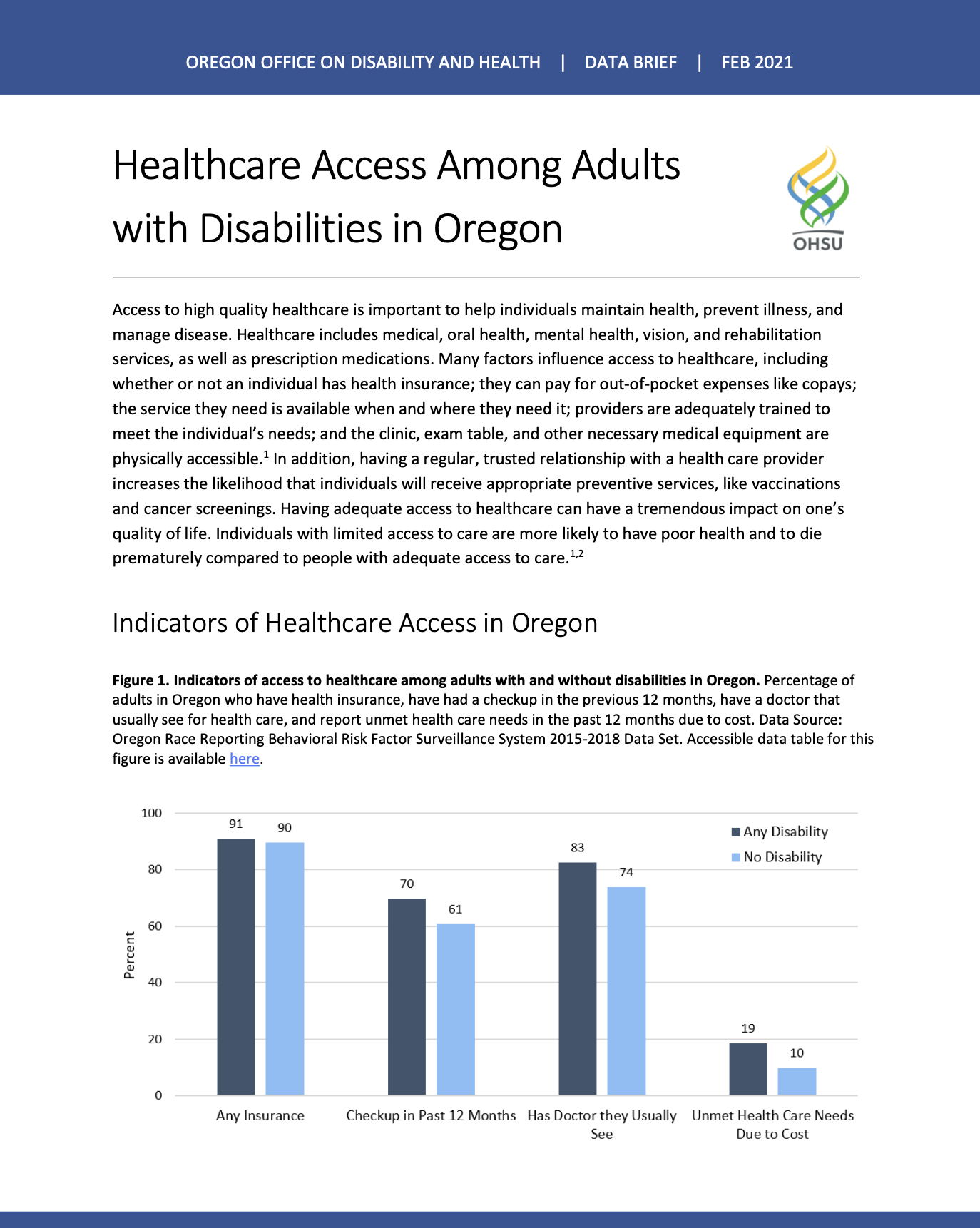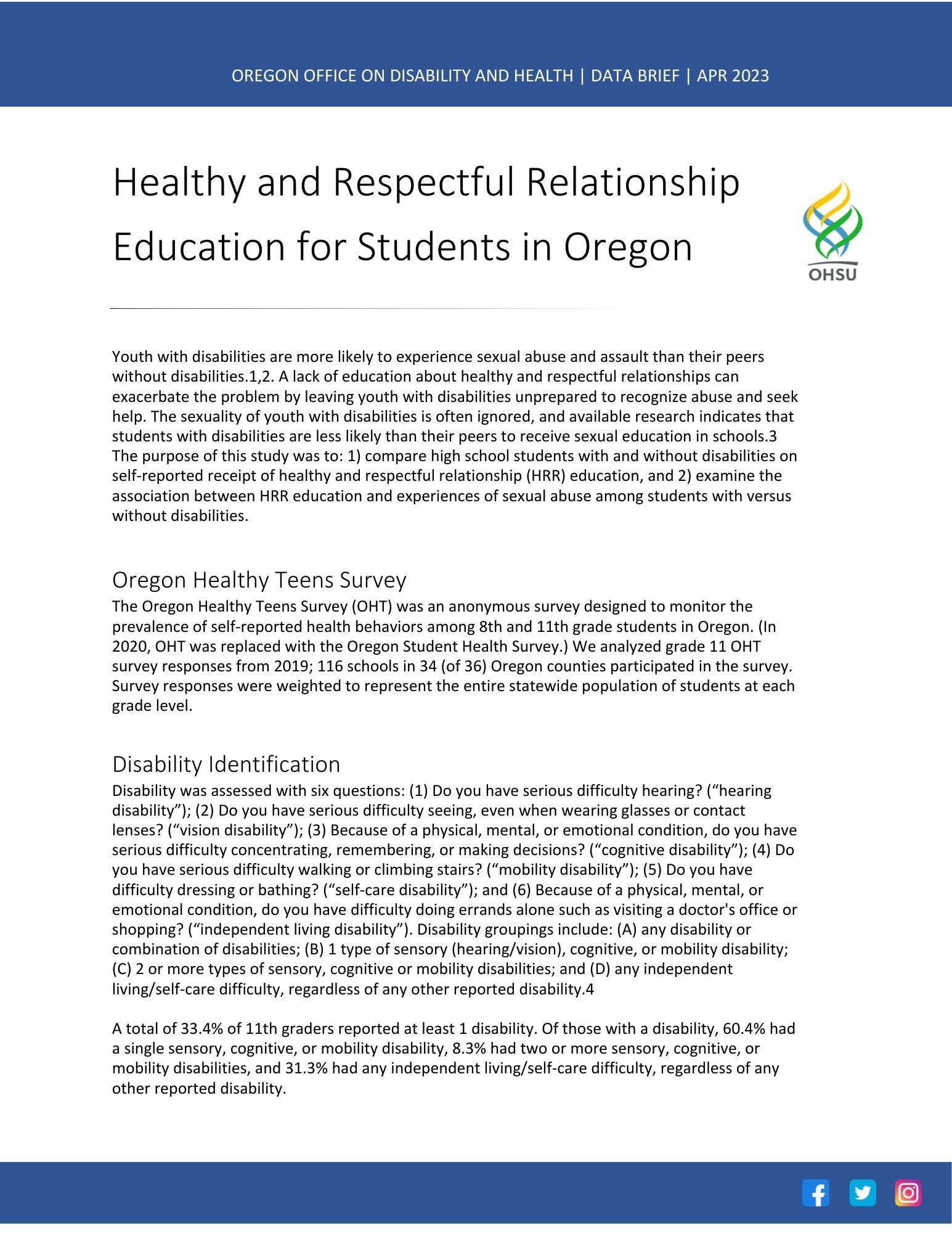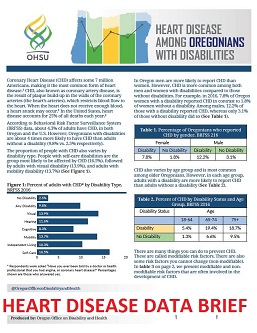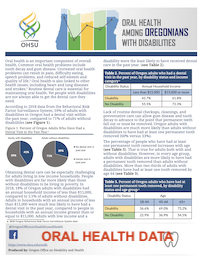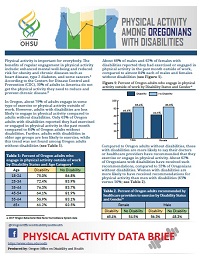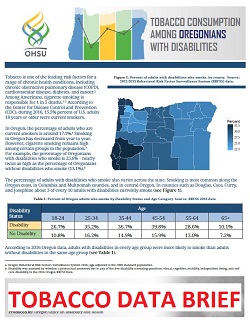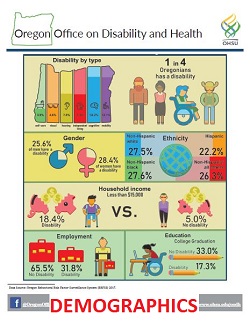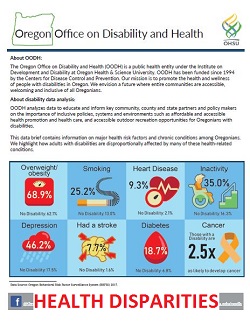Oregon Disability Health Data and Statistics
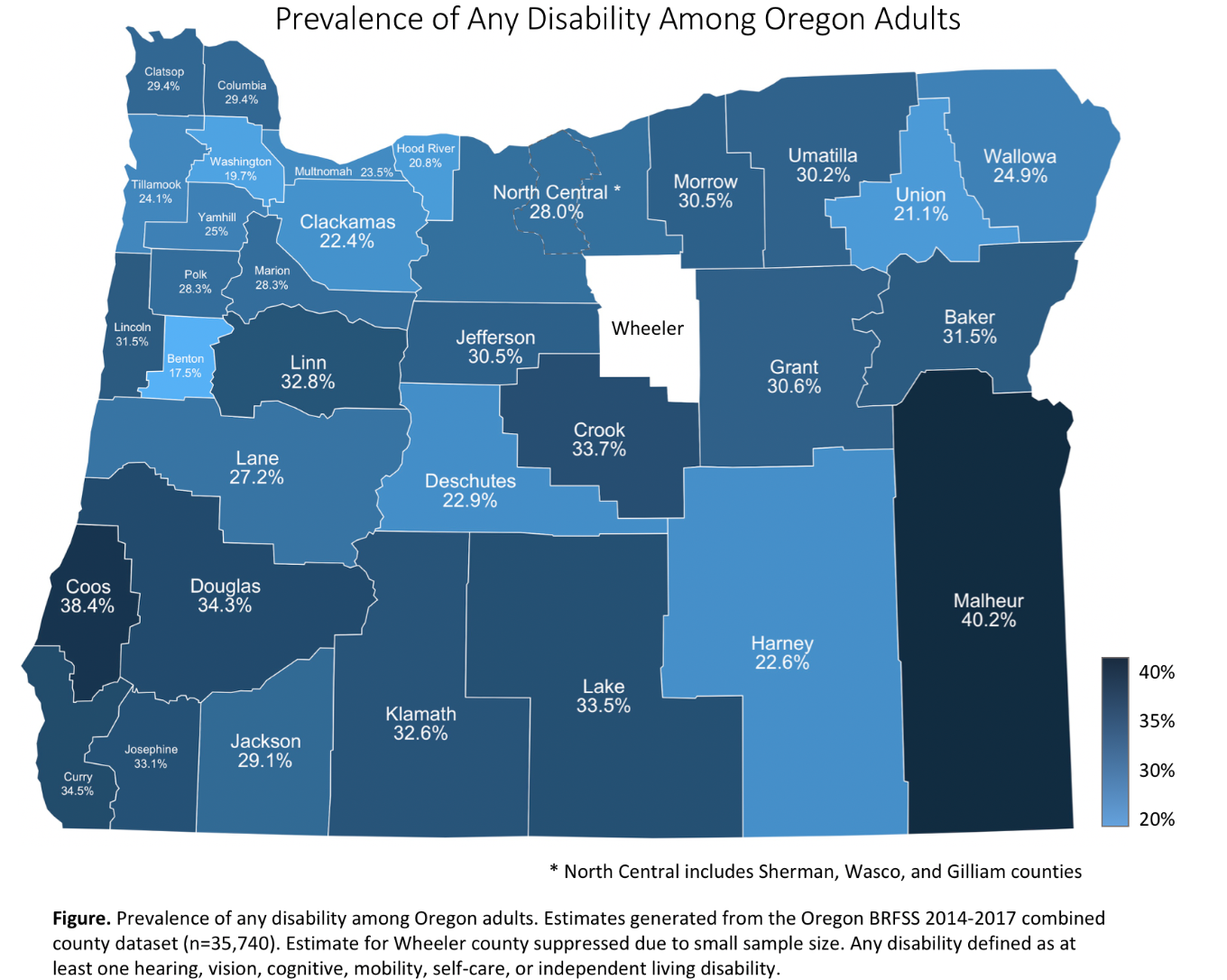
The Oregon Office on Disability and Health analyzes data relating to adult Oregonian with disabilities in order to identify the trends and disparities among this demographic.
Oregon Office on Disability and Health utilizes data from the Behavioral Risk Factor Surveillance System, which was established by the Centers for Disease Control and Prevention in 1984. The Behavioral Risk Factor Surveillance System collects information on health conditions, health risks and behaviors and preventive care services among adult residents of the United States. This telephone based survey is conducted at state and local levels by random digit dialing of landlines and cell phones. This questionnaire consists of three sections: a core module that is common among all states, state added modules that are specific to states and optional modules.
Oregon Office on Disability and Health analyzes Behavioral Risk Factor Surveillance System data (both national and state-specific) each year and highlights significant health disparities found in the disability community in topic-specific data briefs [see below]. The data briefs compare the data from specific questions included in the Behavioral Risk Factor Surveillance System questionnaire's core module that reveal health disparities and reflect the state of health among people with and without disabilities in Oregon in comparison to people with and without disabilities in the United States.
Data Briefs 2016-2021
Data Briefs 2008-2016
